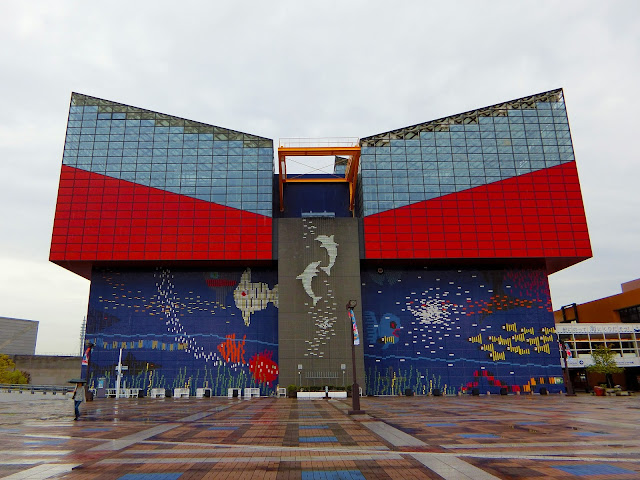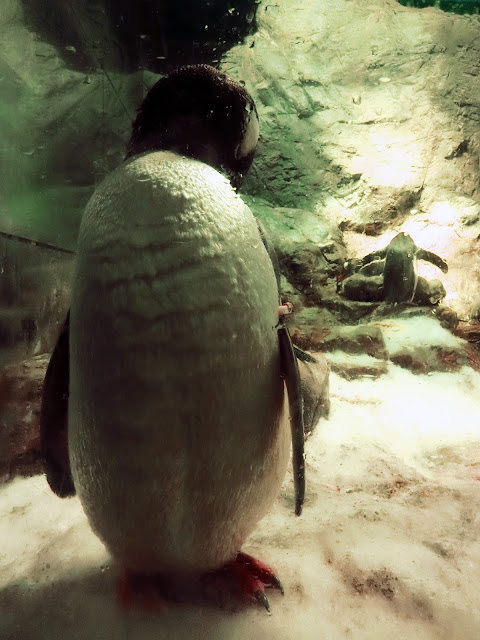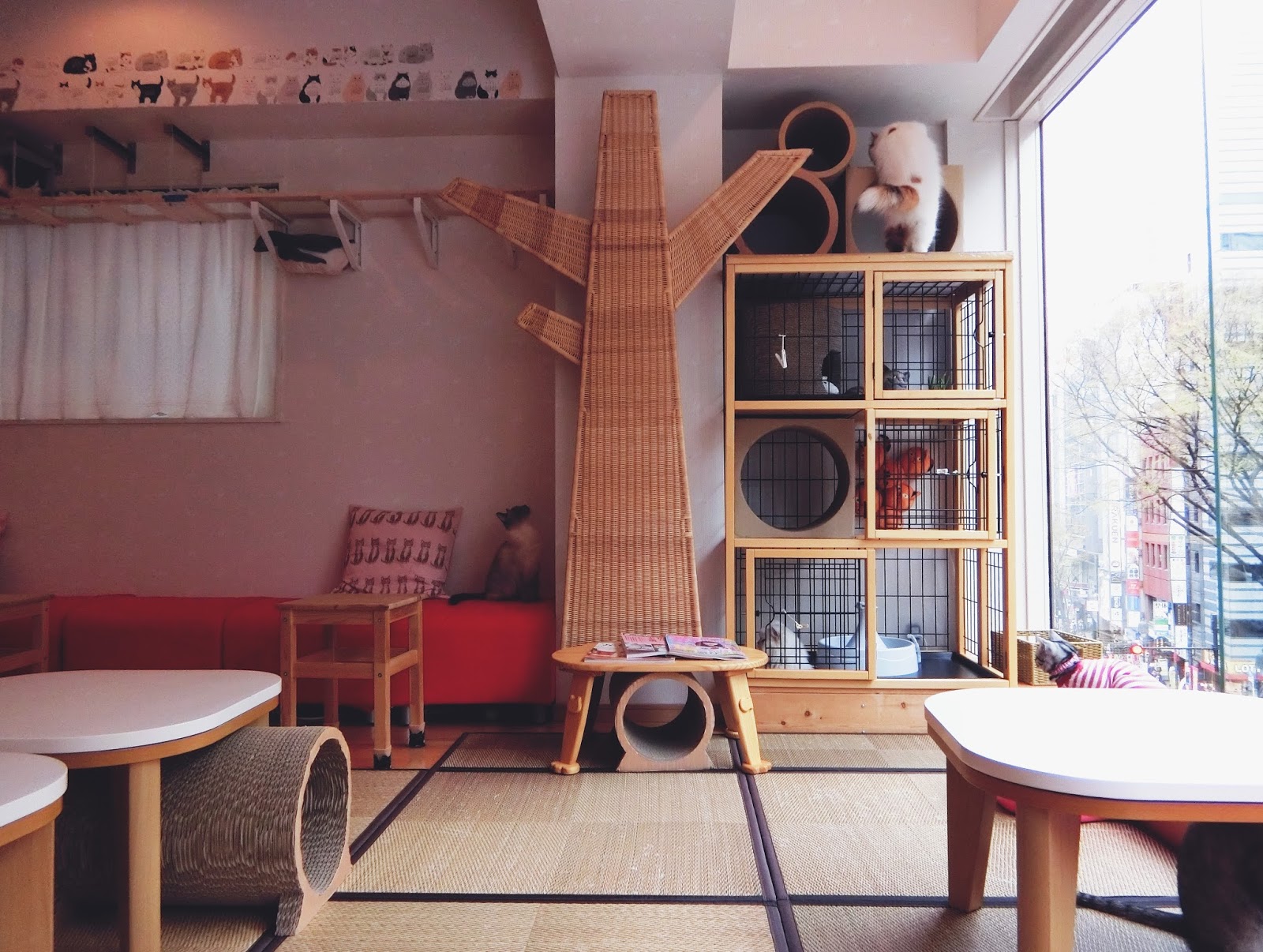JAPAN 2015: Day 8 - Osaka Aquarium Kaiyukan.
How do I decide which photos to post? I see if I get bored editing them. This is especially true for this post. I discarded hundreds of photos because I got bored editing them. Yeah, hundreds. Past me decided to get overexcited over ocean life and took way too many photos that don't really matter.
Since today's post is mainly about my aquarium trip, I may have dived a little too deep into ocean life research. Sometimes people ask me why do I know so much random things. It's because of times like this la. I went through the photos and edited them, at the same time researched about the creature I was editing and roughly constructed the content. Disclaimer: Facts presented may not be 100% accurate.
Anyway, a bit too long of an irrelevant intro. Let's go on a trip!
April 14th, 11AM - Osaka Aquarium Kaiyukan (海遊館), Osaka.
I mentioned in my previous post that I got the Osaka Kaiyu pass which is a value-for-money at 2,550¥. This pass gives you unlimited entries to Osaka Aquarium Kaiyukan and unlimited train/bus rides on the day you activate it. A normal Kaiyukan entry ticket goes at 2,300¥ will also give you unlimited entries to Kaiyukan (so you can head out for lunch and come back after if you like) but it obviously doesn't have the transportation included. So, unless you're walking to Kaiyukan, the former would bee a wiser choice.
You guessed it, Kaiyukan is Osaka's Aquarium and is apparently one of Japan's most spectacular aquariums. They have a whale shark ok!
It was a rather gloomy morning, with the occasional drizzle.
Here we are! This fun looking building is indeed Kaiyukan,
Approaching the entrance. That's the Tempozan Ferris Wheel. Kaiyukan's website recommended visitors to take a lunch break at the Tempozan Harbour Village but I didn't manage to check it out.
By the way, the opposite side is where Universal Studios Japan, which we'll visit in my next post!
You know you're near the aquarium when you see this jaw of a.. fish? I didn't bother to wait for my turn to pose with it so I settled for this shot.
Kaiyukan is segmented into zones based on the natural environments of the marine life. The first zone we encountered upon entering is the Aqua Gate, which is a tunnel-shaped tank. It's supposed to make us feel like we're walking underwater among many fishes, skates and rays (batoids).
This is the cownose ray! Sorry I couldn't get a better shot but the face of this ray looks like a more whale than cow to me.
Guitar fishes/rays, I think? Well, to quote my dear friend Wikipedia - "Sharks and rays are both cartilaginous fishes which can be contrasted with bony fishes. Rays are basically flattened sharks, adapted for feeding on the bottom. Guitarfish are somewhat between sharks and rays, and show characteristics of both (though they are classified as rays)."
A Yellowtang making friends with some kind of ray.
After passing through the Gate, we found ourselves in Japan Forest - the name of the next zone. Well, like an actual forest, this zone is filled with natural sunlight and has amphibians, reptiles, birds and mammals besides fishes.
Take this Japanese giant salamander for instance. Though often mistaken as reptiles, salamanders are actually amphibians. Mainly because they have moist skins instead of dry scales.
My favourite guys - the Asian small-clawed otters! They're so so so cute!!!!!! Just look at that, that's a face you can't say no to. Anyway, these guys are the smallest among the otter family - so the Asian in the name might be accurate in another way as well? I'll leave it to your interpretation.
Before we move on to the next zone, here's an image that summarises all the zones we're about to encounter.
Ok, now we can move on to the next zone - Aleutian Islands.
This LADY's name is Pata and she celebrated her 20th birthday this year! See the coverage here. She's a sea otter and sea otters are the heaviest fellows in the otter family. An Asian small-clawed otter weighs between 1-5kg and a sea otter weighs.. Well, in our case - Pata is 20kg!
River otters, sea otters... Like same same only?... NO! They're different and here's how:
Did you know? A group of otters in the water is called a "raft". Hahaha super cute. Another super cute thing is Pata's face, I didn't manage to take a shot of it but just visit the news coverage to see it.
What I do have, is this video of Pata rolling about and grooming herself on the water surface.
Next, we're at Monterey Bay where we can see lots of California sea lions and harbour seals. These fellows are fat and FAST so I couldn't get any nice close ups.
Here's one with the sea lions on the lower level of the tank. Most of the tanks in Kaiyukan can be observed from a few levels and angles.
Moving on to the Gulf of Panama zone where you can find this ring-tailed coati. I've no idea what it is, it kind of looks like a cross between raccoon and squirrel. It has a pretty cool latin name - nasua nasua.
Sidetrack a bit. Whenever I think of raccoon, I can't help but to reminded of Chopper's favourite line - "...たぬきじゃない!" ("...tanuki ja nai!" / "...not a raccoon!"). Ok end of track.
In the Panamanian waters too you'll find a long-spine porcupine fish. The way it swims is so mesmerising, I would love to see an inflated one though!
Ok I didn't know what fish that was until I searched many many times on the Internet. My search phrases included "submarine-like fish" and "weird fish with many fins". Needless to say, I couldn't find what I was looking for. I chanced upon a picture of a porcupine fish much later and finally identified that fish in my video.
The terms "porcupine fish" and "puffer fish" are often used interchangeably but they're actually pretty different. No chart for you this time, the main differences are:
Porcupine fish: Visible spikes even when not inflated, Spikes are larger
Puffer fish: Spikes not visible when not inflated, Spikes are thinner
Next we have the Ecuador Rain Forest zone and here's where we can find the world's largest something and something.
First, largest freshwater fish in the world - the piracucu aka the giant Arapaima. This is rather close to home because a few years ago, there was this fuss in Malaysia about the Tasik Kenyir monster - which is suspected to be this species. Read the Nat Geo coverage here.
Then, we have the largest rodent in the world. Spot him if you can, the capybara!
There's also the Antartica zone where you can find different kinds of pengwings chilling out. (Why pengwings and not penguins? Cumberbatchers you better know it, here.)
And here's a pengling messing with diver. The diver was actually cleaning the bottom of the tank or something. When I saw that, I finally found another lifelong dream of mine - to be an aquarium cleaner. Seriously, I would love to swim among those ocean fellows (the animals, not the divers)!

Tasman Sea zone is where the dolphins are! This in particular is the Pacific white-sided dolphin. These dolphins have short beaks and large dorsal fins.
Here's a video of mother dolphin and its child swimming together. Calves tend to swim synchronously with their mothers for camouflage purpose, and also because they learn by imitating their mothers.
And of course there's a video of a jump! Pacific white-sided dolphins are known to be agile, acrobatic and social. A fun bunch!
There was a Great Barrier Reef zone but I guess I didn't take any photos of it because I wasn't that fascinated. It just kind of reminds me of those aquariums people keep at home or in hotels/restaurants/etc.
Below are some photos of fellows found at the Seto Inland Sea zone. Seto Inland Sea is located in western Japan and connects the Pacific Ocean to the Sea of Japan. The photos are captionless because I'm getting just a little tired. It's almost 3AM as I'm writing this. Well, they are pretty self-explanatory anyway, so just enjoy them!
Ah, we've finally arrived at the signature zone of Kaiyukan - the Pacific Ocean zone. This is the largest tank in Kaiyukan (34 meters in length, 9 meters in depth, 5,400 tons of water) and serves as its centrepiece. Besides scalloped hammerheads, Japanese jack mackerels and other marine life, it is also home to the whale shark.
Here's a video of the tank and the whale shark in motion.
Is it a whale? Is it a shark? It's a whale shark!
The whale shark is the largest fish in the world and can reach up to 12 metres or more. If you don't find that impressive, just remember - the whale shark is a fish, not a mammal like the whale. Despite their size, these gentle giants are harmless and feed on plankton etc.
Destiny from Finding Dory can attest to that!
Not the best shot of this magnificent creature.
Just a quick "timelapse"? Not sure what mode my camera was on when I took this.
A selfie with the tank. No fishes wanted to selfie with me I guess, all ran away from the frame.
In the same tank, there was also this guy which totally looks like a kelefeh character from Spongebob.
I know they aren't, but just imagine those are the eyes and mouth. Cute right! Anyway, this is a stingray. Remember how its bottom looks like, we'll compare it with the other rays below.
This is an eagle ray, notice the difference compared to the stingray in the background? An eagle ray's snout is shaped like an eagle's beak, or some say a duck's bill. Meanwhile, a stingray's snout.. Well, there isn't really a prominent one is there? Stingrays' front are usually flat. Their bodies are round-ish, while eagle rays are rhomboid-ish.
"Yeah! Just check out my snout and wings!"
"Remember me, guys? I'm a cownose ray, just like my relative that made an appearance at the very beginning!"
And what kind of ray is this?
It's time to move on to the next zone or tank. Well, the next one is labelled as seasonal exhibit and it seems that the marine life exhibited here varies from season to season.
This seems to be the smallest tank in this place. There was this bigfin reef squid in it.
There was also this derpy looking fellow, the ocean sunfish or mola mola. It is the heaviest known bony fish in the world. Don't you think it looks like a prehistoric creature?
A selfie with the Coast of Chile tank. Lots of Japanese anchovies here. I once bought some preserved Japanese anchovies (pet food) from Japan for my cat, she didn't like them.
A loggerhead sea turtle from Cook Strait zone.
The Japan Deep zone features the Japanese spider crab - the biggest crab in the world and if that isn't enough, it can live up to 100 years!
Right... How about nope.

A sea egg aka white sea urchin!
So I did a search on the proper plural form of octopus and apparently all three "octopodes", "octopi" and "octopuses" are accepted. It's a long story, but if you're interested - here.
The next zone is called the Floating Jelly Fish zone which of course, is filled with jellyfishes. Many types can be seen - moon jelly, brown jellyfish and even jellyfish as tiny as the head of a matchstick! Enjoy the incoming photos, they're like nature's work of art.
Look at it glimmer!
The next zone is my favourite! The Arctic zone.
Dark and chilly in here. Are we supposed to feel like we're beneath ice?
I love this overhead dome where we can see the bellies of ringed seals as they swim past.
At first when I read Kaiyukan's description that says "Look up at the ice on the ceiling and meet Ringed seals smiling at you from the overhead dome tank", I chuckled a little. Maybe the translation was too literal, I thought. BUT THEN I FOUND THIS VIDEO:
What! The seal really looked like it was smiling! Too too too cute!!!
We can see the ringed seal up close too.
It likes the attention!
And this is so precious! It's rolling about in the crushed ice, loving life (and attention).
Here's another bunch of attention seekers. The rockhopper penguins from the Falkland Islands zone.
Yeah, they're the relatives of the surfer guin from Surf's Up and are also the world's smallest penguins.
Rocks are our thang.
This is a touch pool at the Maldives zone and yes, you can touch whatever that's inside! They're mostly rays and other batoids. I was reluctant at first because they seem intimidating and aren't the stings dangerous? But apparently, these guys are peaceful creatures and only attack when threathened or stepped on.
I went ahead and touched this guy! It was silky smooth and it seemed to like being touch.
Right before we exit, we came upon a zone that seemed a little like a forest zone or a nursery.
Check out these baby otters! Ahhhhh the cuteness!!!
They are very social creatures and like huddling together
What you see here is an otter trying to find its siblings. Otters produce many types of sounds for different purposes and this is a chirp, which is used as a locator sound. IT'S SO CUTE!
Who do we have here?
It's a sloth! Just like me!
That concludes my trip to Osaka Aquarium Kaiyukan. It took up half a day! Stomach was already rumbling so I went for late lunch at Ichiran.
Later I went to Joypolis, a super-sized game centre in a mall. Nothing much to highlight about that place. Only a must-visit if you're a big fan of arcade games and UFO (pronounced "you-fo") machines aka claw machines.
Dropped by the Umeda Sky Building too because it's nearby. However, I didn't go inside (to the sky garden) because I thought it was nothing much. Ahhh... Don't worry! I went back in 2016 and really explored it. So let's keep that content for another day yeh. Meanwhile, here's a picture of the building:

I'm standing directly in between the twin buildings and facing the sky bridge.
Now, time for more food! Remember the street food night market that I introduced in this post? I went there for late dinner again!
Super fresh sashimi! Even though I just visited and admired their distant relatives in the day. Looking back, these skewers weren't cheap! At 500¥ each, that's about MYR 20 for sashimi on a stick.
Unnnnfff would you look at that egg.
Decided to have my food in one of the tents, ordered this pretty Asahi too!
Part of the menu provided by the tent.
And here we go, more skewers! Ah Yakitori!!!
Generous portion of Takoyaki!
Beer and good food on a chilly night - the perfect conclusion to the day.
Till next time! (^◇^)ノ
Day 0.5 - Getting There. And Tsukiji.
Day 1 - Ueno Park. “Hana Yori Dango”.
Day 1 - Sensoji. And an Adventure at Night.
Day 2 - All Things Ghibli (Museum).
What to do when you lose your JR Pass.
[SHORTS]: My First Airbnb Experience.
Day 4 - Hello Kyoto! (Intro).
Day 4 - Eastern and Downtown Kyoto.
Day 5 - Ryoanji and Kinkakuji.
Day 5 - Arashiyama and HORSE SASHIMI?
Day 6 - Fushimi Inari-taisha and Nishiki Market.
Day 7 - Gotta Catch 'Em All in Osaka (Pokemon Center) and Mint Bureau's Nighttime Sakuras.
Day 8 - Osaka Aquarium Kaiyukan.
Day 9 - Universal Studios Japan.
Day 10 - Osaka Castle, Den Den Town, Dotonbori.
Day 11 - 10 Days Japan Itinerary (Tokyo, Kyoto and Osaka).





































































Comments
Post a Comment